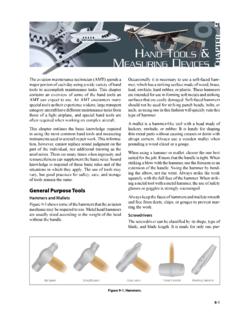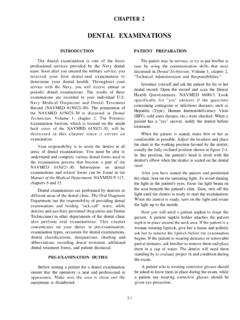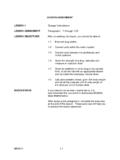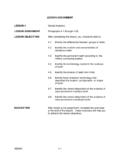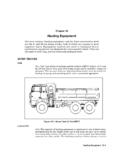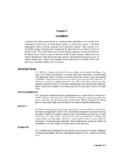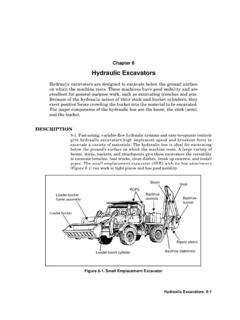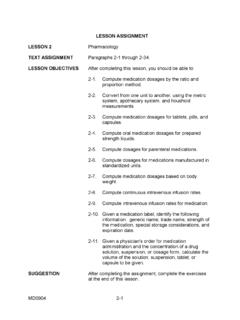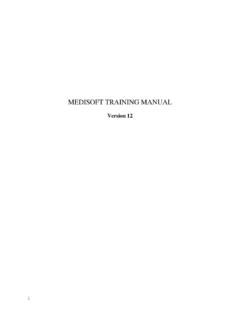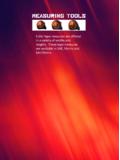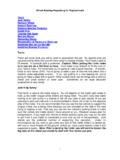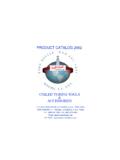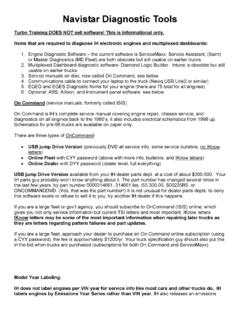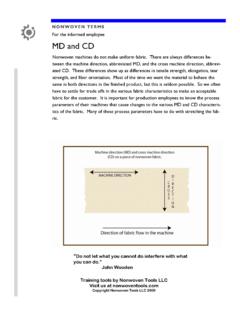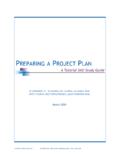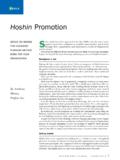Transcription of Air Compressors and Pneumatic Tools - …
1 Air Compressors and Pneumatic Tools 9-1 Chapter 9 Air Compressors and Pneumatic ToolsWhen air is compressed, it receives energy from the compression. Thisenergy is transmitted through a pipe or a hose to the operating equipment,where a portion of the energy is converted into mechanical work. Acompressed-air system consists of one or more Compressors together with adistribution system to carry the air to the points of use. Engineer units usecompressed air to inflate rubber equipment, to spray materials, to operatepneumatic Tools , to clean equipment, and to perform certain jobs inmaintenance shops. A Pneumatic tool uses the energy of compressed air asthe power for its COMPRESSORS9-1. Portable air Compressors are commonly used on construction sites whereit is necessary to meet frequently changing job demands. Figure 9-1 andFigure 9-2, page 9-2, show two types of air Compressors . The capacity of an aircompressor is determined by the amount of free air that it can compress to aspecified pressure in one minute, under standard conditions (absolutepressure of pounds per square inch [psi] at 60 F).
2 This amount of free airis usually expressed in cubic feet per minute (cfm). The number of pneumatictools that can be operated from one air compressor depends on the airrequirements of the specific 9-1. Trailer-Mounted, 250-cfm Air CompressorFM 5-4349-2 Air Compressors and Pneumatic ToolsFigure 9-2. Wheel-Mounted, 750-cfm Air CompressorEFFECTS OF ALTITUDE9-2. When a given volume of free air is compressed, the original pressure willaverage absolute pressure at sea level. If the same volume of free airis compressed to the same gauge output pressure at a higher altitude, thevolume of the air after being compressed will be less than the volumecompressed at sea level. Thus, while a compressor may compress air to thesame discharge pressure at a higher altitude, the volume supplied in a giventime interval will be less at the higher altitude. Table 9-1 shows thepercentage of volumetric efficiency at different altitudes based on a 100-psigauge output 9-1.
3 Efficiency of Air Compressors at Various Altitudes (100-psi Gauge Output Pressure)CAPACITY OF COMPRESSORS9-3. On a typical job, some Tools operate almost continuously, while othersoperate infrequently. An analysis should be made to determine the probableactual need before determining the compressor requirements. If ten rock drillsare nominally drilling, generally no more than five or six of the drills will beconsuming air at a given time. Additionally, the amount of air used will varyconsiderably in different applications. Table 9-2 provides data on the airrequirements of specific Tools . After considering the number of working toolsand their air requirements, increase the total amount of air demanded by 10percent to compensate for Reciprocating CompressorTwo-Stage Reciprocating CompressorRotary CompressorAltitude (Feet)Percent of EfficiencyPercent of EfficiencyPercent of Efficiency2, , ,000 , , 12,000 5-434 Air Compressors and Pneumatic Tools 9-3 Table 9-2.
4 Description and Operating Data for Pneumatic ToolsNUMBER OF COMPRESSORS9-4. The number of Compressors required will depend on the sizes , if 1,400 cfm of free air were required for a specific job, two 750-cfmunits would be sufficient. Air Compressors are sturdy machines, but like allmechanical equipment they require maintenance. Therefore, in some cases astandby unit will be OF COMPRESSORS9-5. If possible, centrally locate all Compressors on the job. This arrangementhas the advantage of unified operation and better supervision. It is possiblethat a central location is not advisable due to a lack of piping, too large afriction loss, or obstructions on the job site. In this case, it would be necessaryto locate Compressors at appropriate points. All air Compressors must beleveled and should be placed as close to the air-operated devices as conditionswill RequirementsAir-Line HoseToolpsicfmHourly Work OutputDiameterPaving breaker (jackhammer) (80-lb)Attachments: chisel point, moil point, 8" diameter tamper, sheeting driver80-1006515 sq ft of 6" asphalt paving with chisel point; 12 to 50 sq ft of 6" to 8" nonreinforced concrete with moil point depending upon width of cut (12 sq ft for narrow cut, 50 sq ft for wide cut); maximum lift of 8" with tamper; driving wood or up to 2" thick steel sheeting with sheeting driver3/4"Paving breaker(clay digger) (25-lb)Attachments: moil point, pick, spade, drum opening tool80-9035 Loosen cubic yards of tough clay with spade.
5 Open 20 to 30, 55-gallon drums with a drum-ripping tool1/2"Nail driverAttachments: 1/2" and 3/4" head driving sets, rivet buster9030250, 80d nails (after the nails have been started with a hammer or a sledge)1/2"Circular sawAttachments: woodworking, 12" blade (Special abrasive disks available for cutting other materials.)80-10075 Cuts 4" x 4" lumber in 30 seconds1/2"Chain sawAttachments:24" blade, Type I, Size 180-10090 Cuts 12" diameter hardwood log in 50 seconds. (Under 25 : 5/8", 25 to 100 : 3/4", over 100 : 1")5/8" to 1/2"Wood drillAttachments:2" diameter capacity. Ship augers range from 7/16" to 2" in 1 and 3 largest size auger, 125 holes 36" deep3/4"Sump pump (3" discharge, 175-GPM capacity)80-90100 175 GPM at 25 head150 GPM at 150 head3/4"Steel drill (Number 3 Morse taper chuck, 1 1/4" capacity)90-1002730 each 1" diameter holes in 1" thick steel plate (lead holes of 1/4" diameter drilled previously)1/2"Handheld rock drill (dry-type, 55-lb)Attachments: 2 , 4 , 6 , and 8 hollow-steel drill rods and 1 5/8", 1 3/4", 1 7/8", and 2" drill bits80-10095 Soft rock: Medium rock: Hard rock: 1 3/4" Hole15-20'10-15'5-10'3/4"FM 5-4349-4 Air Compressors and Pneumatic ToolsOPERATION OF COMPRESSORS9-6.
6 Air Compressors should always be located upwind from the work to keepforeign material out of the air intake. When operating under extremely dustyconditions, take precautions to protect the units from as much dust aspossible. Other factors to consider are as follows: Open all drain cocks to drain condensation after each 8 hours ofoperation, thus eliminating the possibility of rusting or freezing. Close the side panels of the compressor housing when it is beingoperated in cold weather. Block the wheels and engage the hand brake of the trailer mountbefore operation. Ensure that the receiver tank is drained of air when operations USES9-7. Compressed air is used extensively on construction projects. In manyinstances, compressed air is the most convenient method of operatingequipment and PLANTS9-8. Air Compressors are frequently used in asphalt plants for fuel atomizationof the dryer burner.
7 Compressors are also used to clean up the plant, to powervarious Tools at the paving site, and to OPERATIONS9-9. At the batch plant, vibrators may be used on the aggregate hopper toprevent bridging. Air-driven pin drivers and cleaning devices for cleaningsawed joints are used at the paving TOOLS9-10. The military uses Pneumatic paving breakers, nail drivers, saws, drills,pumps, and a variety of other Pneumatic Tools . Pneumatic Tools can bepowered by either a reciprocating-percussion or a rotary-vane air motor. Reciprocating-percussion air motor. The reciprocating-percussionair motor is used when a hammering action is desired. It employs afree-floating piston moving in a cylinder. When the throttle is opened,a set of valves introduce air alternately to the ends of the cylinder,driving the piston back and forth. The force of the piston istransmitted to the tool , which does the work. Rotary-vane air motor. The rotary-vane air motor is employedwhen a rotary motion is desired.
8 The motor employs a cylinder havingan eccentrically mounted slotted rotor, with each slot containing aspring-loaded vane. When the throttle is opened, compressed airenters a small compartment. Pressure on the vanes causes the rotor toturn in the direction of a larger compartment. A gear train transmitsthe rotation to the attachment, which does the 5-434 Air Compressors and Pneumatic Tools 9-59-11. Two important factors that affect the condition of a Pneumatic tool arelubrication and air pressure. Lubrication. To check for proper lubrication of a Pneumatic tool ,pass a piece of paper in front of the tool exhaust port. If a thin film ofoil accumulates on the paper, the tool is being properly lubricated. Ifdrops of oil appear on the paper or if oil foams around the exhaustport, the tool is over-lubricated. If no oil appears, the lubricationdevice should be checked immediately. Air pressure. Each tool requires a specified volume of air at a specificpressure.
9 If the volume of air or pressure is allowed to dropexcessively, considerable damage will result. Check for air leaks in thehose and around the air connections. Listen to and observe the toolwhen it is operating. If a tool appears to be operating sluggishly orappears to be surging (erratic operation), it has either too much or toolittle pressure. The Tools should never be operated with less than 70-or more than 100-psi pressure at the tool . If the air-pressure gauge onthe air compressor continually remains below 70 psi, the unit isoverloaded (too little pressure at the tool ).9-12. Most Pneumatic Tools are heavy and create a considerable amount ofvibration. A difficulty sometimes encountered with their use is operatorfatigue. This is a particular problem with inexperienced operators. Carefulattention should be given to the selection of operators to ensure that they arein good physical condition and strong enough to operate the MANIFOLDS9-13.
10 Many construction jobs require more compressed air per minute thanany one compressor will produce. An air manifold is a large-diameter pipeused to transport compressed air from one or more air Compressors without adetrimental friction-line Manifolds can be constructed of any durable pipe. Compressors areconnected to the manifold with flexible hoses. A one-way check valve must beinstalled between the compressor and the manifold. This valve keeps themanifolds back pressure from possibly forcing air back into a compressor sreceiver tank. The Compressors that are grouped to supply an air manifoldmay be of different capacities, but the final discharge pressure of each shouldbe coordinated at 100 psi. Compressors of different types should not be usedon the same air manifold. The difference in the pressure control systems of arotary and a reciprocating compressor could cause one compressor to becomeoverloaded while the other compressor idles.
